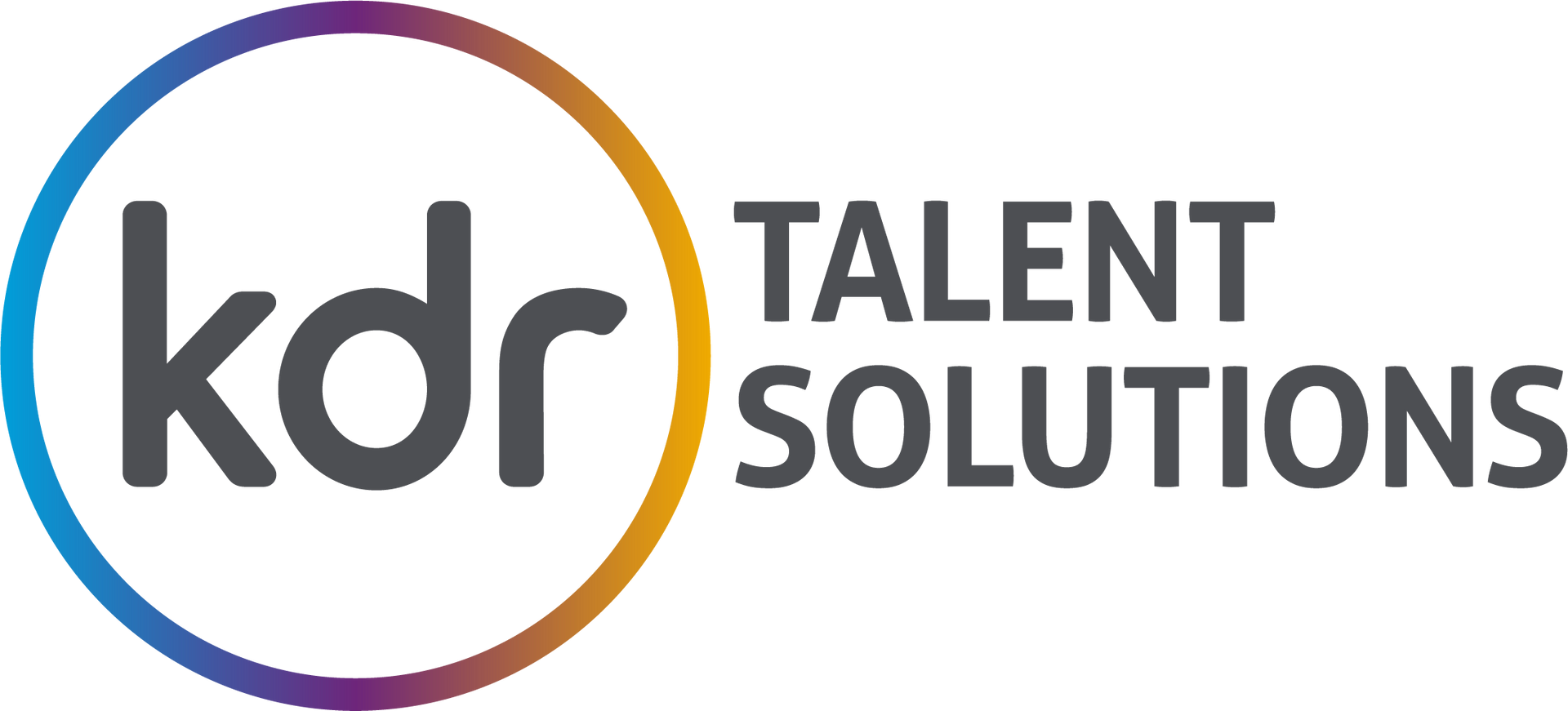The AI Skills Gap - Why Companies Struggle (and what to do about it)
Demand for AI talent is booming, but filling roles can still feel challenging for some.

Despite a wave of AI bootcamps, MSc programmes and online certs, the real-world AI skills gap risks blocking innovation and slowing team scaling.
So, what’s actually going wrong? And what do high-performing hiring managers do differently to fix it?
Diagnosing the AI Skills Gap
The talent pool isn’t empty, but the skill sets often don’t align with what’s needed in production environments. Many job specs still optimise for “AI research” rather than applied, product-focused AI. The result can then be a mismatch to required outcomes, not because candidates lack skill, but because their experience often lies in different contexts, like academic research or prototype environments, rather than fully integrated production systems.
Actionable fix:
Stop hunting for unicorns and start mapping your needs to adjacent, trainable profiles. What do we mean by this? For example, let’s say you are trying to hire MLOps Engineers, the people who can productionise machine learning models, automate pipelines, manage versioning, monitoring, and deployment. But that specific skill set is still relatively niche and evolving.
The idea here is instead of waiting to find the perfect MLOps engineer, identify strong backend engineers with solid Python experience (the language of most ML frameworks), good knowledge of CI/CD pipelines, testing, containerisation, etc as well as being comfortable working with APIs, microservices, and deployment environments.
These engineers already have the foundational skills required to transition into MLOps quickly. You're just layering on ML-specific tools and workflows.
Backend engineers are already used to building reliable, scalable services, managing code versioning, testing and deployment, collaborating with DevOps teams and writing clean, maintainable Python code.
To make the transition over to MLOps, they would need to learn tools like MLflow, Airflow, Kubeflow, or Metaflow, model versioning and experimentation tracking, ML pipeline orchestration, monitoring performance and drift in production and serving models as APIs or microservices. Because they already know Python and software engineering principles, they can ramp up fast. Especially when working alongside data scientists who can handle the modelling, while they focus on deployment, automation and reliability.
Instead of endlessly searching for “experienced MLOps engineers”, which are scarce, you can re-skill strong backend engineers already in your team or hire backend engineers from outside with an interest in ML and invest in targeted upskilling. It’s a faster, more sustainable way to build MLOps capability internally.
How to spot the right type of candidate for this pivot when hiring:
They have a background in Spark/Kafka, cloud infra, batch and real-time data workflows
They have experience working with Data Science teams but never formally in ML
They are familiar with data lineage, observability and operational handoffs
They mention streaming data, event-driven architecture, or data product ownership
Why This Works:
Model performance depends just as much on the data pipeline as the algorithm. Yet many teams separate these too rigidly. Upskilling data engineers into ML pipeline engineers creates a bridge, in essence you have someone who then understands the nuances of data at scale, can speak both "infra" and "model" and builds production-ready, retrainable ML workflows. Essentially, they become the backbone of scalable, reliable and resilient AI systems.
Another approach could be to identify
role aligned professionals with deep domain knowledge in business relevant areas like finance, healthcare, or biotech and upskilling them in applied machine learning, so they can help design, interpret and even build AI models that deliver real, business-aligned impact.
If you are considering this to help bolster your pipeline, some examples of job titles that may be suitable to pivot might be:
A credit risk analyst in finance
A clinical data manager in healthcare
A supply chain planner in pharma
An actuary, lab scientist, R&D lead, or commercial ops analyst
Because they already understand the context and challenges inside their industry, they know what success looks like for a model in practice. They work with data every day, just not always as an engineer. The goal isn’t to turn them into full-stack machine learning engineers, but to equip them with enough applied ML knowledge to become high-impact collaborators, bridging the gap between technical teams and real-world business needs.
Why It Works:
From speaking to clients, sometimes the issues they encounter stem from the lack of communication or understanding from the deep technical knowledge of the AI engineer on the one hand, and the business functions needs on the other. Using domain specialists as bridges provides the domain insight needed to ensure AI solutions align with practical, high-impact business goals. AI often fails not because of bad models, but because the models weren’t designed with real-world complexity or regulatory nuance in mind. A finance analyst or medical expert brings that critical context. Most of these experts already work in data-rich environments. They know the quirks, gaps, and sensitivities. That’s half the battle in building reliable ML systems. On top of this, applied ML is now more accessible with tools like:
AutoML platforms (DataRobot, H2O, Vertex AI)
Low-code notebooks (Jupyter, Colab)
ML libraries (Scikit-learn, XGBoost)
Whilst external ML hires often need time to get up to speed on industry context, regulatory nuance and stakeholder priorities. Domain experts already speak that language fluently. With structured support and collaboration, bridging the technical gap becomes far more achievable, and the results, more immediately relevant.
Giving high-performing subject-matter experts a path into applied ML also keeps them engaged, invested and future-proofed. Many are already self-learning tools like Python or AutoML platforms, structured training and guided mentorship can unlock real value, fast.
Realistic Examples in Practice:
In healthcare: A clinical ops manager learns Python and model evaluation basics.
She now collaborates with the data science team to shape models for patient trial matching, offering context that improves both performance and clinical trust.
In banking: A credit analyst upskills in AutoML and interpretable model techniques.
He works alongside ML engineers to improve default prediction models, bringing in real-world logic, policy nuance, and exception handling that wouldn’t be obvious from the data alone.
The Bottom Line:
Domain experts + ML training = applied AI that delivers.
They won’t replace your ML engineers.
But they’ll make your models more relevant, faster to deploy, and more likely to succeed in the real world.
Another challenge compounding the skills gap is that AI education doesn’t touch messy data or scaling as effectively as real world scenarios.
Academia teaches model building on clean datasets. But in the real world? Data is incomplete, inconsistent, or scattered across silos and AI needs to be both accurate and deployable.
To help ensure you are getting the right candidates through we would suggest prioritising candidates who can talk through:
Real-world trade-offs (e.g. latency vs. accuracy)
Model lifecycle challenges (drift, retraining)
Data validation and governance practices
Cross-functional AI integration (Ops, Product, Data)
Also, partner with universities, yes, but focus on building an internal bridge: mentor junior hires with domain knowledge but no applied AI background. It’s the fastest way to future-proof your pipeline.
The third issue is the best candidates might never hit the open market
Elite AI engineers often get pre-emptively hired by hyperscalers or VC-backed startups. By the time your job ad’s live, they’re already gone.
In these instances, it may be tricky for you to compete on key motivators such as:
Salary, AI infrastructure and research opportunities
Instead tap into other known candidate motivators such as:
High-impact, high-ownership work
Greenfield projects and architectural freedom
Remote-first culture with a good work-life balance
Clear pathways to influence and progression
Actionable fix:
If you can’t outbid the likes of Google, out-“meaning” them. Lead with your mission, your roadmap and your real impact.
Your job descriptions might be working against you
Some AI job specs are outdated, overly broad, or ask for “10 years of experience” in technologies that are 4 years old. It’s an easy mistake to make as many time poor hiring managers or TA’s re-use legacy job descriptions and just tweak them. The problem with this however is that it prevents fresh thinking about what is really required for the role. To make job descriptions work for you it’s worth overhauling any that are older than 12 months to ensure that only the relevant requirements are added.
Actionable fix:
Strip out credentials and focus on capabilities
Separate “must-have” from “nice-to-have”, ruthlessly
Align job titles to market norms: use role titles that reflect what the person will actually be doing and that candidates recognise and search for.
Test the JD with someone external (your best candidates won’t read past paragraph two if it’s fluff)
Examples of common misaligned job titles:
Posting a role as “AI Engineer”
…but it’s actually about building data pipelines and infrastructure.
A better title would be: ML Ops Engineer or Data Engineer (ML focus)
Advertising a “Machine Learning Engineer”
…but the role is mostly about research or exploratory modelling.
A better title would be: Applied Research Scientist or Data Scientist (ML focus)
Listing a “Data Scientist”
…but the job is heavily focused on deploying models to production and managing model lifecycle.
A better title would be: ML Engineer or MLOps Engineer
Why It Matters:
It attracts the right talent because the best candidates self-identify by title. If the label doesn’t match the role, they won’t apply.
It also improves clarity for internal stakeholders: It’s easier to scope, budget and align expectations when the title reflects actual responsibilities.
As an added bonus it saves time in the hiring process because you’ll spend less time filtering through irrelevant applications from people misled by the title.
How to close the AI skills gap (for real)
1. Build internal conversion pipelines
Your next AI engineer might already be on your team. Create structured pathways for:
Backend to MLOps
Analyst to ML Modelling
Platform to AI Infrastructure
Data engineer to Model integration
Use learning budgets to fund certifications, but bolster them with on-project exposure and mentorship.
2. Target non-obvious hiring channels
Instead of posting on generic job boards:
Mine OSS contributors to relevant GitHub repos
Look at AI hackathons or Kaggle leaderboard talent
Engage in niche communities (HuggingFace, LangChain Discords)
Partner with companies sunsetting AI projects, great talent can often get let go when strategy shifts.
3. Rethink your hiring process
Speed wins. Top AI candidates expect offers in 1–2 weeks. But speed alone isn’t enough.
Make your process a selling tool:
Give a sneak peek at real problems they'll solve
Let them meet future collaborators (not just HR and a whiteboard)
Share your AI roadmap and how this role drives it
4. And don’t forget: career trajectory options, tooling autonomy and the chance to architect real-world AI systems often provide a draw just as strongly as clarity over compensation,
FAQs
Q: Why is hiring AI talent still so hard?
Because you're often hiring into an ecosystem (infra, data quality, orchestration), not just a role. Solving the surrounding tech debt makes hires more successful.
Q: Can non-AI engineers really transition successfully?
Yes, if your environment allows for structured learning, real-world practice and support. Focus on trainability, not perfection.
Q: How do smaller companies win against FAANG offers?
They don’t compete, they differentiate. Sell your mission, your flexibility and your culture of ownership.
Q: How do we future proof our hiring strategy?
Stop building around static roles, instead start building learning organisations.
What a “learning organisation” looks like:
Instead of just filling skill gaps, learning organisations invest in capability building. That means:
Hiring for adaptability and learning velocity, not just current expertise
Upskilling internal talent from adjacent areas
Creating space and structure for continuous learning (e.g. dedicated time for experimenting with new tools, internal tech talks, certifications)
Encouraging cross-functional collaboration, so AI doesn’t live in a silo
Empowering employees to evolve with the tech, not fall behind it
What this means for hiring strategy:
Hire for core competencies, not just tools
Build job specs that focus on problem-solving and learning ability
Look for people excited by change, not just stability
Create career paths that allow for growth into emerging roles
Partner with recruitment teams who understand how talent evolves
The AI skills gap won’t close overnight, but companies that act now will win later. The future belongs to those who are able to build adaptable, multi-skilled teams, create space for learning, not just hiring, focus on delivery, not just job titles
Need to build your AI team?
KDR Talent Solutions works with leading organisations to find and develop high-impact AI talent, from MLOps experts to applied NLP engineers. Let’s talk.
Message us or visit www.kdrtalentsolutions.com






